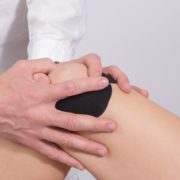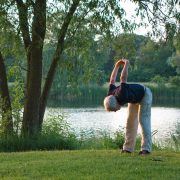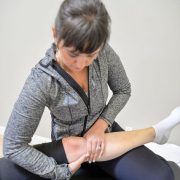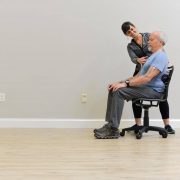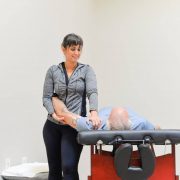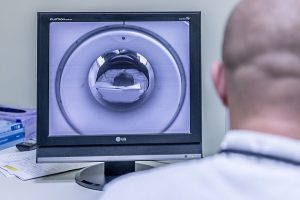Arthroscopic Knee Surgery – Does it Even Work?
While researching for my latest article in the Portsmouth Herald, I came across an interesting study titled: “Arthroscopy for degenerative knees – a difficult habit to break.”
The title of this study is telling.
Arthroscopic knee surgery is still one of the most common surgeries performed, despite research telling us that it’s not nearly as effective as most people are led to believe.
Furthermore, studies now indicate that people who get arthroscopic knee surgery are likely to have knee arthritis that advances more rapidly – resulting in a total knee replacement that could have been avoided.
Arthroscopic knee surgery is a minimally invasive procedure that’s commonly done to help “clean out” your knee joint if you’ve got degenerative arthritis, or to clip out pieces of a torn meniscus that might be irritating your knee.
Sounds pretty simple and harmless – right?
But over the years, research has shown that this procedure is really not necessary in most cases.
Most people can get pain relief and restore function in their knees without ever getting surgery.
One of the earliest studies from 2002 by JB Mosely and colleagues, and published in the New England Journal of Medicine, revealed that placebo surgery for advanced knee arthritis was just as effective as actual arthroscopic surgery. Since then, numerous studies have shown similar results. Even if you have a torn meniscus or degenerative arthritis in your knee – you can still get better naturally and with conservative treatment like physical therapy.
Despite all this research, surgeons are still performing these procedures more than ever.
In some cases it’s just what the surgeon knows, and they haven’t kept up with the research. Other times, it’s due to poor conservative management and not giving therapy enough time to work.
In our office, we often see people after they’ve tried regular physical therapy first. Since we have a more specialized approach, and we’re able to spend more time with our clients, we tend to get better results and can help clients avoid surgery all together.
But not all physical therapy clinics are afforded that luxury. In those cases, people are led to believe that the physical therapy “didn’t work,” and they get scheduled for surgery.
But what’s the big deal really?
If outcomes are the same regardless of whether you get surgery or not – why not just get it? It’s quicker, and far more convenient than going to weekly therapy appointments…
But despite the term “minimally invasive,” it’s still surgery.
You will have bleeding, swelling, and recovery time. There is trauma that is caused to the soft tissue in and around your knee that has to heal. There’s also the risk of infection, which comes with a whole set of different complications.
And then of course there’s the elephant in the room that nobody likes to talk about…
I’ve seen many of these arthroscopic surgeries performed that had clients feeling WORSE than before surgery. Because it turns out the procedure wasn’t even necessary. Luckily, we’re still able to rehabilitate them. But it’s completely demoralizing and discouraging for our clients.
In general, despite how small the procedure may seem, you want to avoid surgery whenever possible.
Although small, the risks that can happen with surgery simply aren’t worth it – especially when you can get the same results from natural, conservative treatment.
For some, arthroscopic knee surgery really is necessary. But for most, it can be avoided.
If you’re currently suffering from knee pain and want to learn more about what you can do to avoid surgery and heal your knee pain naturally and on your own – DOWNLOAD our Free Guide: 7 Ways to Get rid of Knee Pain Naturally.

